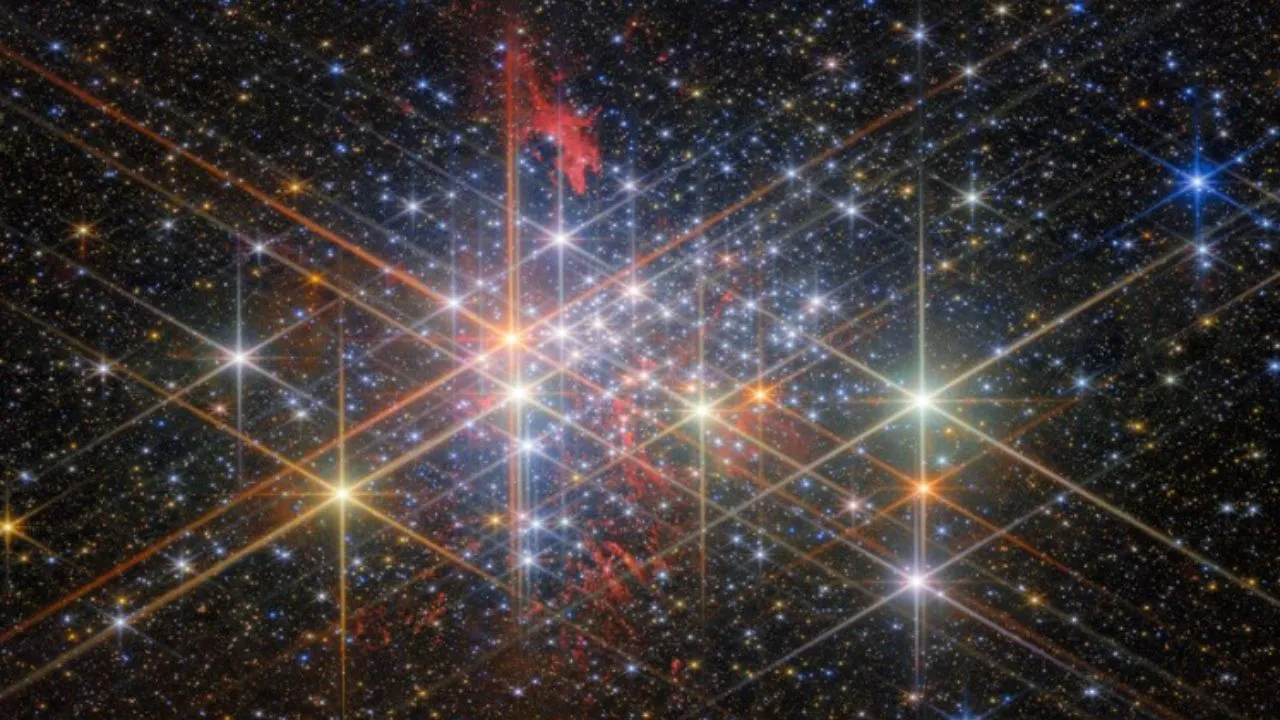NASA’s James Webb Space Telescope continues to unlock the mysteries of the universe, and its latest revelation is nothing short of breathtaking. In a recent image captured by the space observatory, scientists were treated to a stunning view of Westerlund 1, a super star cluster located in the Milky Way galaxy.
Table of Contents
A Galactic Heavyweight: Westerlund 1
Westerlund 1 is not your average star cluster. It is a colossal collection of stars packed into an incredibly dense region of space. In fact, this super star cluster is estimated to contain the mass of up to 100,000 Suns, all crammed into an area just six light-years across. For comparison, our nearest star, Proxima Centauri, is a little over four light-years away from our Sun—illustrating just how concentrated this star cluster is.
What Makes Westerlund 1 Unique?
Discovered in 1961 by Swedish astronomer Bengt Westerlund, Westerlund 1 is one of the most massive young star clusters in our galaxy. It’s home to a variety of massive, luminous stars, including several red supergiants, blue supergiants, and even a rare yellow hypergiant. These stars are among the largest and most powerful in existence, burning through their nuclear fuel at an astonishing rate and destined to end their lives in cataclysmic supernova explosions.
Why This Matters: Insights from NASA Webb
NASA’s James Webb Space Telescope is ideally suited to study objects like Westerlund 1 because of its ability to observe infrared light. Unlike visible light, infrared can penetrate dense clouds of gas and dust, giving scientists a clearer view of what lies inside. This allows astronomers to gain a better understanding of how massive stars form and evolve, as well as the dynamics of star clusters that could eventually form galaxies.
Westerlund 1’s extreme density, combined with the diverse types of stars it contains, makes it a valuable target for research. By observing this super star cluster, scientists hope to unravel mysteries about star formation, stellar evolution, and the fate of massive stars.
What’s Next for Webb and Westerlund 1?
The data gathered by the Webb Telescope offers scientists an unprecedented glimpse into this super star cluster. Moving forward, astronomers plan to analyze these findings to learn more about the life cycles of stars within Westerlund 1 and other star clusters like it. This knowledge could provide key insights into how our own galaxy, the Milky Way, formed and evolved over billions of years.
In the words of NASA: “You’re a super star (cluster),” referencing this brilliant new discovery, which continues to highlight the vastness and beauty of our universe.

